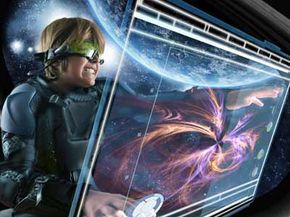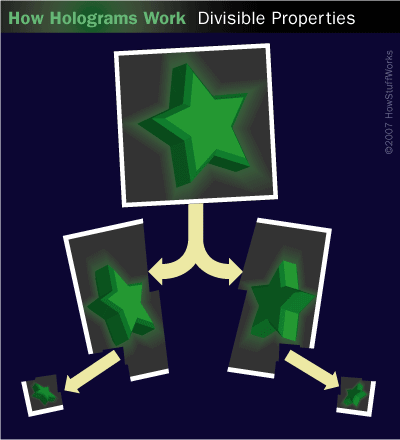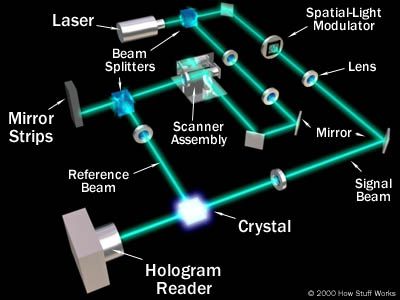In the office of the future, you won't call people with a phone. You will command your computer to call a particular person. "Computer, call Joe at the London office." Suddenly, one of your office walls will flicker and Joe will be sitting across from you as if he were right there. On the other end, Joe will experience the same immersive connection. That's the idea behind tele-immersion: bringing two or more distant people together in a single, simulated office setting. Business travel will be practically unnecessary.
This type of communication will take us beyond the limits of videoconferencing. Have you ever used a Webcam to teleconference with another person? If you have, then you've seen that videoconferencing via the Internet is not a perfect form of communication. The image is close to real-time, but there are delays that cause a jerking video. Also, if someone walks out of view of that one camera, you can no longer see the person. With tele-immersion, people can't walk out of the view of the camera. In fact, you can peer around their office just by looking at the display screen from different angles. It's like having a window to look through.
Holographic environments will be generated by computers with computing speeds thousands of times faster than your PC. There are several steps to constructing a holographic environment:
- The computer recognizes the presence and movements of people and objects.
- The computer tracks those images.
- The computer projects those images on a stereo-immersive surface.
There are several groups working together on the National Tele-Immersion Initiative (NTII) to bring us all together in these virtual environments. In May 2000, researchers at the University of North Carolina (UNC), the University of Pennsylvania and Advanced Networks and Services reached a milestone in developing this technology. A user sitting in an office at UNC in Chapel Hill, NC, was able to see lifelike, three-dimensional images of colleagues hundreds of miles away, one in Philadelphia and the other in New York.
Tele-immersion may sound similar to virtual reality, but there are key differences between the two technologies. Virtual reality allows you to move in a computer-generated 3-D environment, but tele-immersion, for now, can only create a 3-D environment that you can see -- you can't interact in it. The next step is to merge tele-immersion and virtual reality to allow users to alter the scenes that they see.
The applications for immersive holographic environments are endless. Imagine a video game free of joysticks, in which you become a participant in the game, fighting monsters or scoring touchdowns. Instead of traveling hundreds of miles to visit your relatives for the holidays, you'll simply call them up and join them in a shared holographic room. Eventually, you will even be able to hug other people using this technology. Doctors and soldiers could use tele-immersion to train in a simulated environment.




